Panasonic of North America 9TGCF-P14 Panasonic PDA w/ Alps Bluetooth & Sychip WLAN User Manual Suplemental Users Manual Bluetooth
Panasonic Corporation of North America Panasonic PDA w/ Alps Bluetooth & Sychip WLAN Suplemental Users Manual Bluetooth
Contents
- 1. Users Manual
- 2. Supplemental Users Manual WLAN
- 3. Suplemental Users Manual Bluetooth
Suplemental Users Manual Bluetooth

®
Using a Bluetooth
ENGLISH
ENGLISH
SUPPLEMENTARY INSTRUCTIONS
The Setup Wizard
Starting My Wirefree Network
Device Discovery
Serial Ports
Specifications
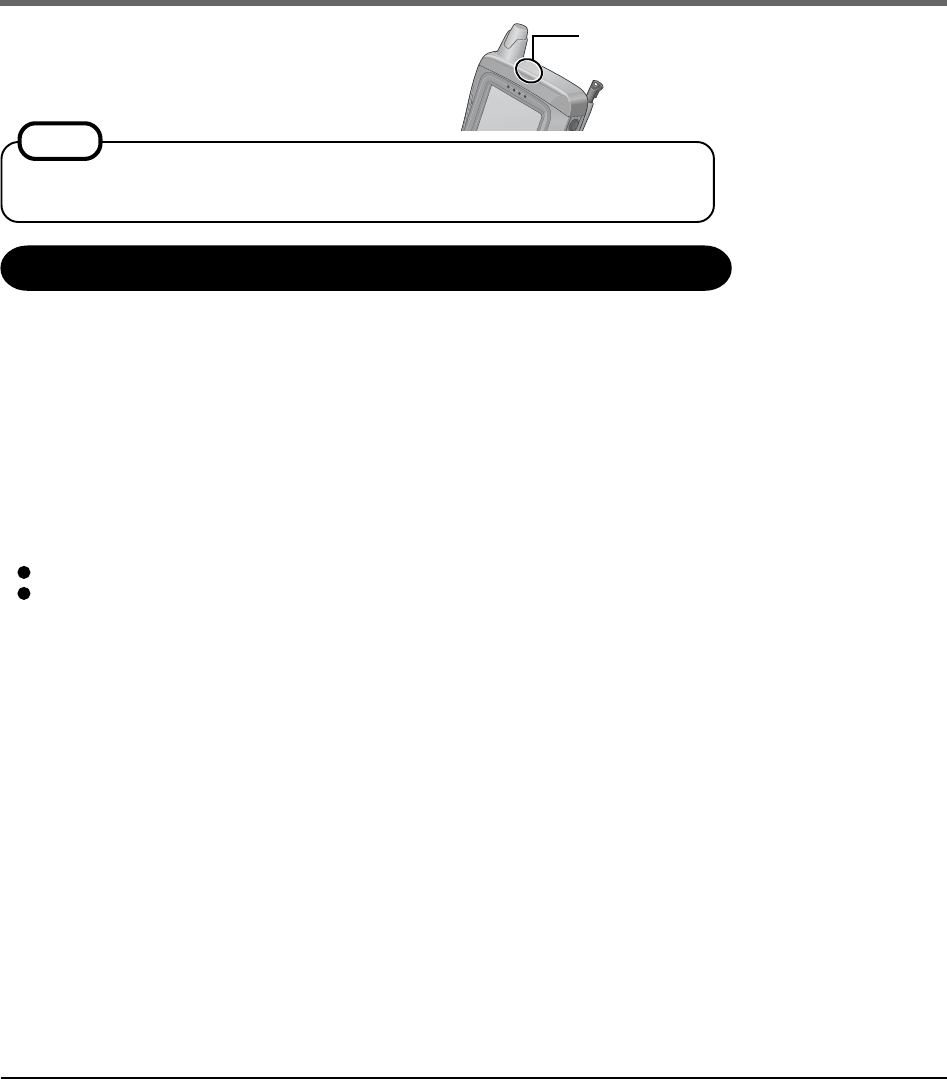
2
Supplementary Instructions
Information to the User
This product and your Health
This product, like other radio devices, emits radio frequency electromagnetic energy. The
level of energy emitted by this product however is far much less than the electromagnetic
energy emitted by wireless devices like for example mobile phones.
Because this product operates within the guidelines found in radio frequency safety stan-
dards and recommendations, we believe this product is safe for use by consumers. These
standards and recommendations reflect the consensus of the scientific community and result
from deliberations of panels and committees of scientists who continually review and inter-
pret the extensive research literature.
In some situations or environments, the use of this product may be restricted by the proprietor
of the building or responsible representatives of the organization. These situations may for
example include:
Using this product on board of airplanes, or
In any other environment where the risk of interference to other devices or services is
perceived or identified as harmful.
If you are uncertain of the policy that applies on the use of wireless devices in a specific
organization or environment (e.g. airports), you are encouraged to ask for authorization to
use this product prior to turning on the product.
Regulatory Information
We are not responsible for any radio or television interference caused by unauthorized modi-
fication of this product. The correction of interference caused by such unauthorized modifi-
cation will be the responsibility of the user. We and its authorized resellers or distributors are
not liable for damage or violation of government regulations that may arise from failing to
comply with these guidelines.
This Supplementary Instructions explains how to get
started with a Bluetooth and point out cases where the
operation of the computer will differ from that in the
Operating Instructions.
Bluetooth
Antenna
Bluetooth communications are done via an antenna. Do not shield this antenna with the
hand, etc. This will negatively effect the performance of your Bluetooth communications.
NOTE

3
ENGLISH
Read Me First - For U.S.A.
Replace as follows.
Federal Communications Commission Radio Frequency Interference
Statement
Note: This equipment has been tested and found to comply with the limits for a Class B
digital device, pursuant to Part 15 of the FCC Rules. These limits are designed to provide
reasonable protection against harmful interference in a residential installation. This equip-
ment generates, uses and can radiate radio frequency energy and, if not installed and used in
accordance with the instructions, may cause harmful interference to radio communications.
However, there is no guarantee that interference will not occur in a particular installation. If
this equipment does cause harmful interference to radio or television reception, which can be
determined by turning the equipment off and on, the user is encouraged to try to correct the
interference by one or more of the following measures:
Reorient or relocate the receiving antenna.
Increase the separation between the equipment and receiver.
Connect the equipment into an outlet on a circuit different from that to which the receiver
is connected.
Consult the Panasonic Service Center or an experienced radio/TV technician for help.
Safety Notice
Do not touch or move antenna while the unit is transmitting or receiving.
Do not hold any component containing the radio such that the antenna is very close or
touching any exposed parts of the body, especially the face or eyes, while transmitting.
Do not operate a portable transmitter near unshielded blasting caps or in an explosive
environment unless it is type especially qualified for such use.
Warning
To assure continued compliance, use only shielded interface cables when connecting to a
computer or peripheral. Also, any changes or modifications not expressly approved by the
party responsible for compliance could void the user’s authority to operate this equipment.
FCC Radiation Exposure Statement:
• This equipment complies with FCC radiation exposure limits set forth for an uncontrolled
environment.
• This equipment must be installed and operated in accordance with provided instructions
and minimum 1.5 cm spacing must be provided between antenna and all person’s body
(excluding extremities of hands, wrist and feet) during wireless modes of operation.
• This equipment may use multiple installed transmitters, which may be capable of simulta-
neous transmission.
This device complies with Part 15 of the FCC Rules. Operation is subject to the following
two conditions:
(1)This device may not cause harmful interference, and
(2)This device must accept any interference received, including interference that may cause
undesired operation.
Responsible Party: Matsushita Electric Corporation of America
One Panasonic Way
Secaucus, NJ 07094
Tel No:1-800-LAPTOP-5 (1-800-527-8675)
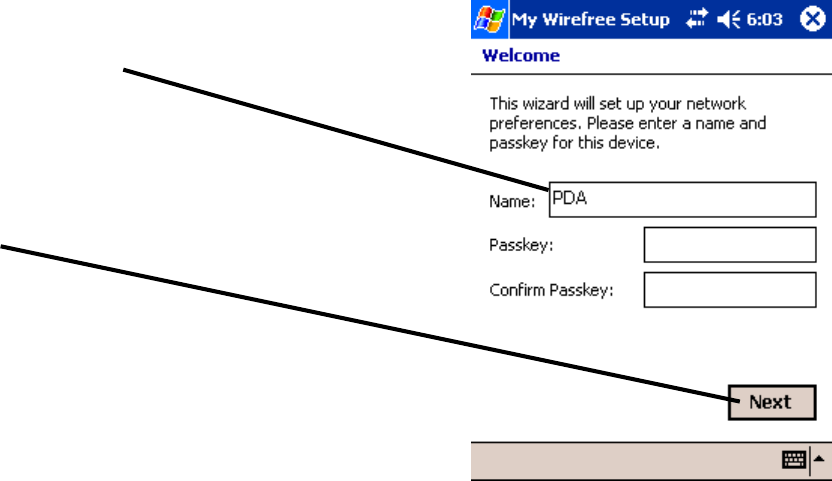
Page 7My Wirefree Network Copyright 2003 Rappore Consulting, Inc.
Setup: Welcome
My Wirefree Network assigns PDA as the default name. This is the name by which
your PDA will be known to other devices.
A personal device passkey is used during bonding or connections for security
purposes. The default is to not set a personal device passkey. A personal device
passkey is only recommended when advanced security is enabled.
The Setup Wizard guides you through each step necessary to configure your device
for connectivity.
To personalize your device settings:
1. Enter a device name.
2. If you want to have a personal device passkey,
enter the same value in Passkey and Confirm
Passkey.
3. Tap Next.
The Setup Wizard
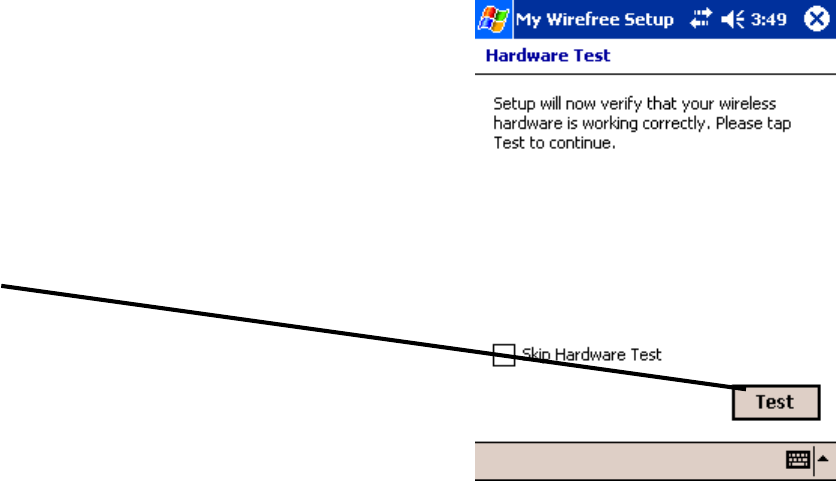
Page 8 My Wirefree NetworkCopyright 2003 Rappore Consulting, Inc.
Setup: Hardware Test
The hardware test initializes and tests the
Bluetooth radio. It ensures that the My Wirefree
Network software can communicate with the
Bluetooth radio. The test does not take very long.
However, you can skip this test and continue with
the setup wizard.
1. Tap Test.
An unsuccessful hardware test may mean your
Bluetooth radio is not functioning properly. Refer
to your device documentation to verify that the
radio is properly installed. If the Bluetooth radio is
a CF or other removable card, verify that the card
is inserted properly. Verify that the power switch
for builtin Bluetooth modules is in the ON
position.
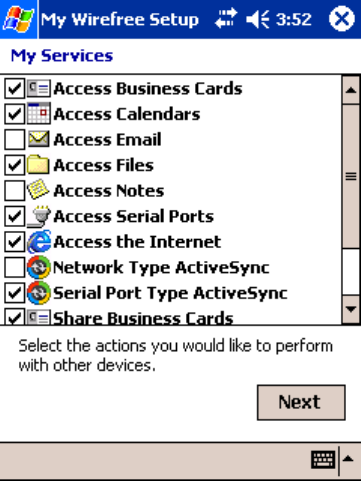
Page 9My Wirefree Network Copyright 2003 Rappore Consulting, Inc.
Setup: My Services
All services that can be accessed or shared by your device can be enabled or disabled
now in the Setup Wizard or later from the My Services screen.
• Access services. Enable your device to see and use services on a remote device.
• Share services. Enable your device to provide services that other devices can see
and access.
The following services can be enabled or disabled:
• Access Audio Gateway*.
• Access Business Cards*.
• Access Calendars*.
• Access Email.
• Access Files*.
• Access Notes.
• Access Serial Ports*.
• Access the Internet*.
• Network Type ActiveSync.
• Serial Port Type ActiveSync*.
• Share Business Cards*.
• Share Files*.
• Share Serial Ports.
(*These services are enabled by default.)
Each enabled service is displayed on the PDA screen with a check in its box.
After enabling or disabling services, tap Next.
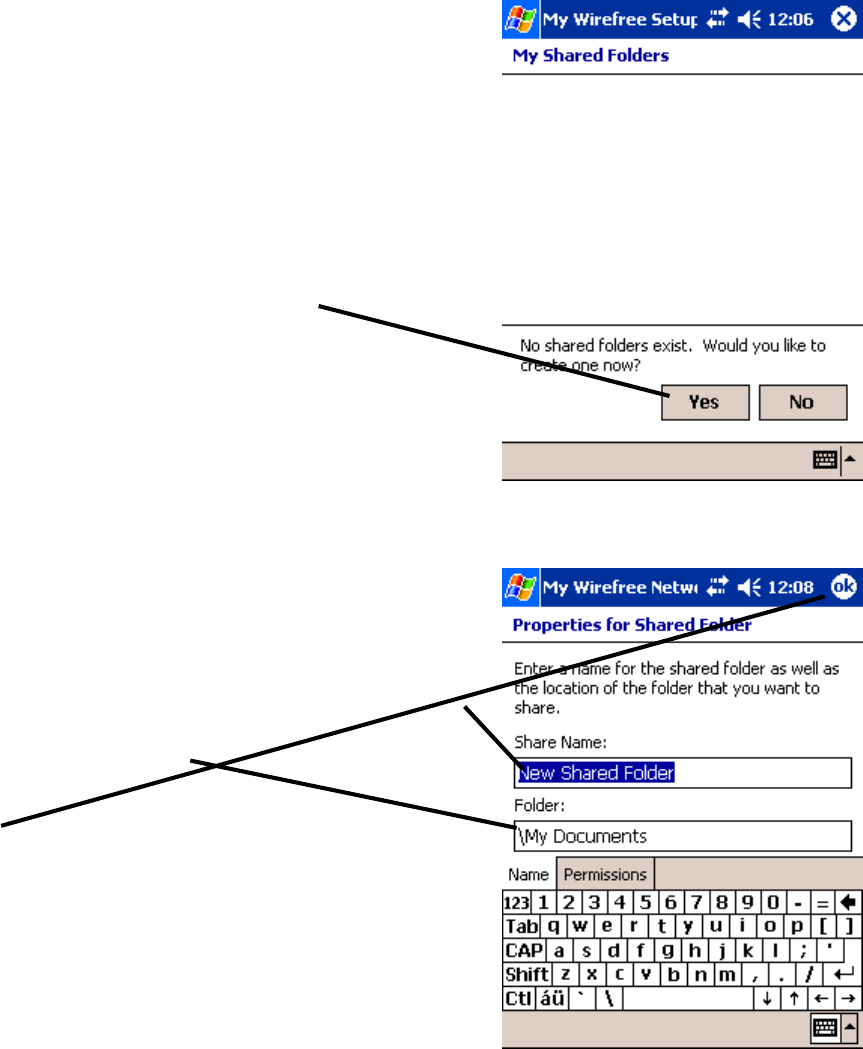
Page 10 My Wirefree NetworkCopyright 2003 Rappore Consulting, Inc.
Setup: My Shared Folders
To make the files and subfolders available for others
to use, a folder must be shared. By default, you will
not have a shared folder when you start My
Wirefree Network.
If you do not want to share any folders, Tap No and
skip to the next section.
If you want to share a folder, Tap Yes.
If you type yes, the Properties for Shared Folder
displays.
Type the Share Name which will be seen by remote
users. By default it is named New Shared Folder.
Type an existing Folder’s full path. The default
value is \My Documents.
Tap OK to exit shared folder properties.
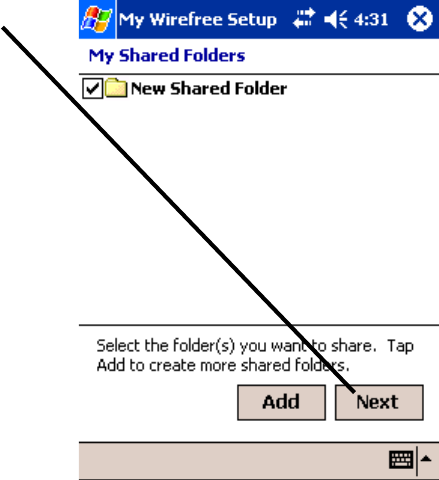
Page 11My Wirefree Network Copyright 2003 Rappore Consulting, Inc.
Tap Add to add another shared folder or tap Next to
continue.
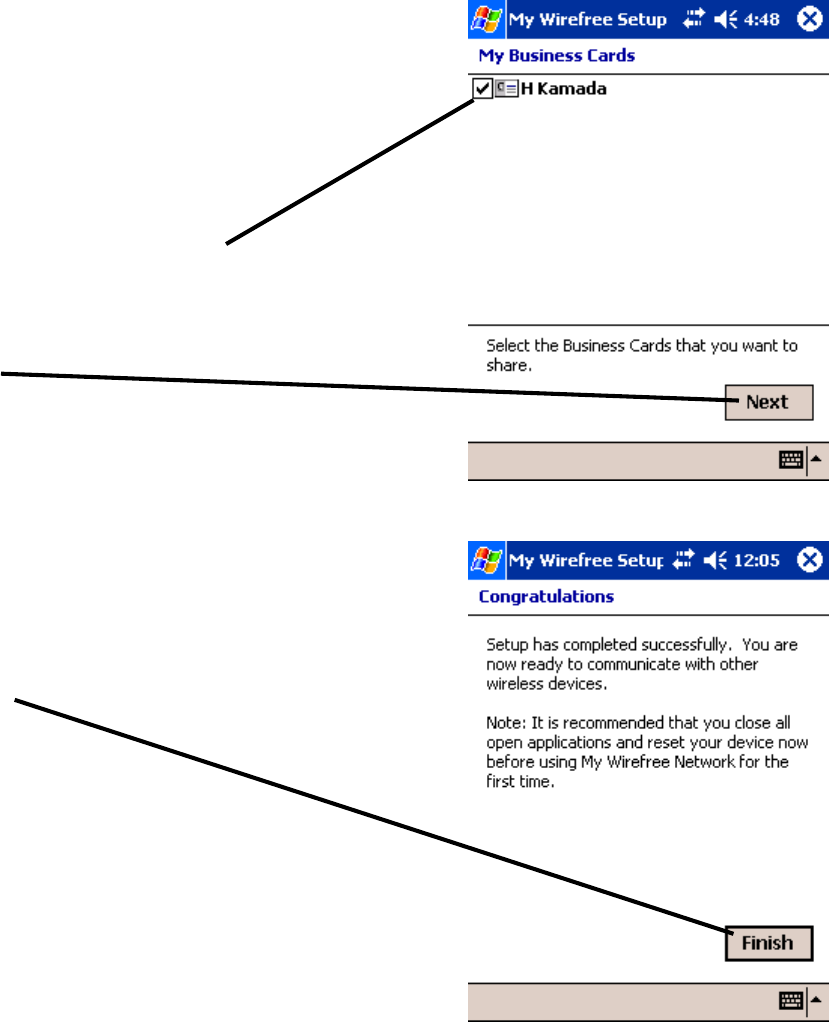
Page 12 My Wirefree NetworkCopyright 2003 Rappore Consulting, Inc.
Setup: My Business Cards
This configuration option will display if you have
contacts in the Contacts program. Each contact will
be displayed with a check box. You will need to
enter your own contact information into the
Contacts program.
1. Tap the business card or cards that you desire
sent to remote devices when a remote device
requests your business card.
2. Tap Next.
Setup: Complete!
This screen displays when you have successfully
configured My Wirefree Network.
1. Tap Finish.
My Wirefree Network is ready for use. Turn to the
next page for further instructions on Starting My
Wirefree Network.
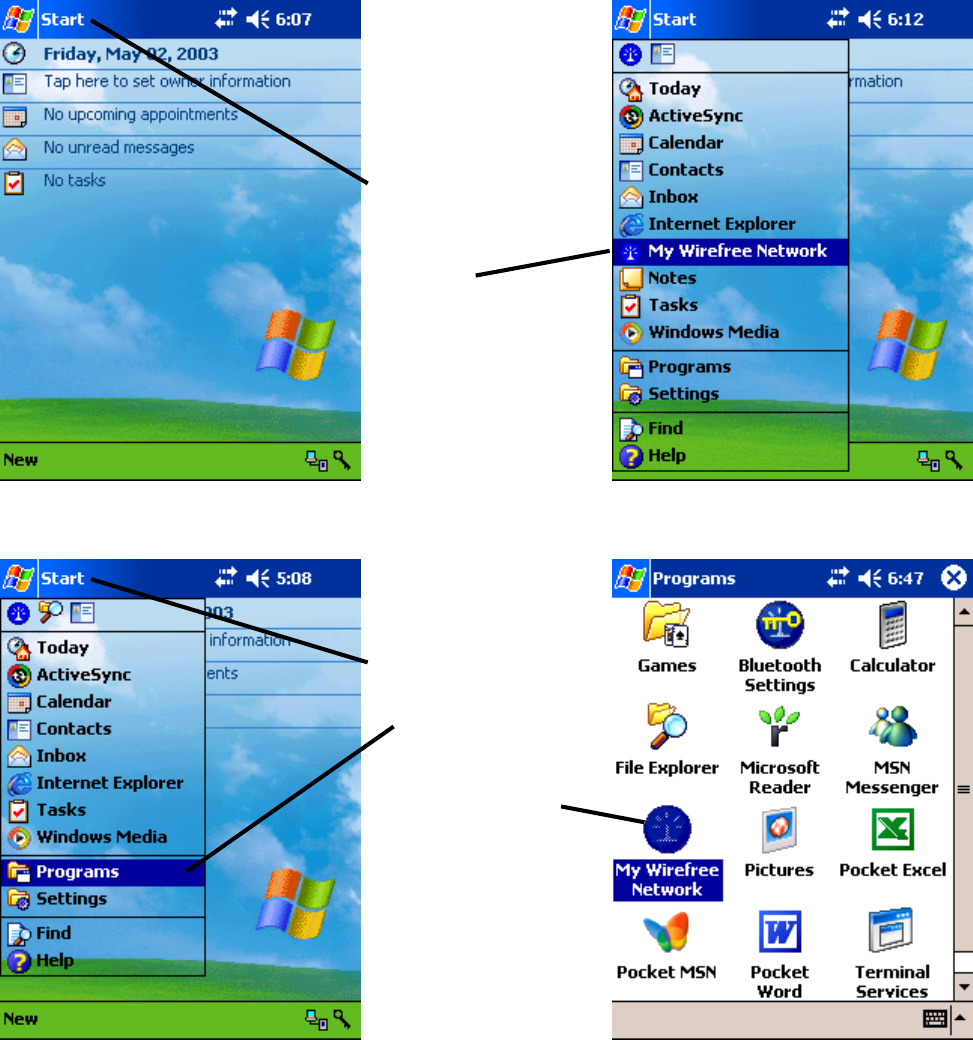
Page 13My Wirefree Network Copyright 2003 Rappore Consulting, Inc.
Starting My Wirefree Network
There are two ways to
start My Wirefree
Network. If My
Wirefree Network
appears in the Start
menu:
1. Tap Start.
2. Tap My Wirefree
Network
Otherwise, if My
Wirefree Network does
not appear when you
tap Start,
2. Tap Programs.
3. Then tap My
Wirefree Network
from the displayed
icons.
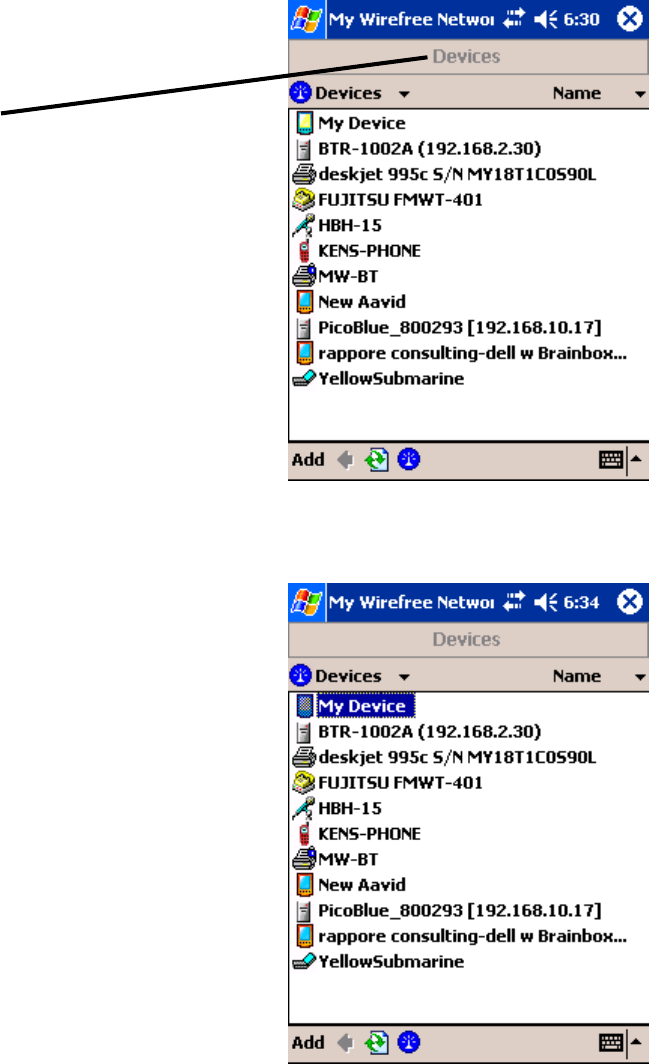
Page 16 My Wirefree NetworkCopyright 2003 Rappore Consulting, Inc.
The My Wirefree Network program has two main components:
Device Discovery
Devices locates and lists other Bluetooth wireless
devices by address or name, so that you can access
the wireless devices and use the services they
provide. The Devices screen is the first screen
displayed by My Wirefree Network as it starts.
My Device aids you in configuring your own device
and the resources that you choose to share with
other wireless devices.
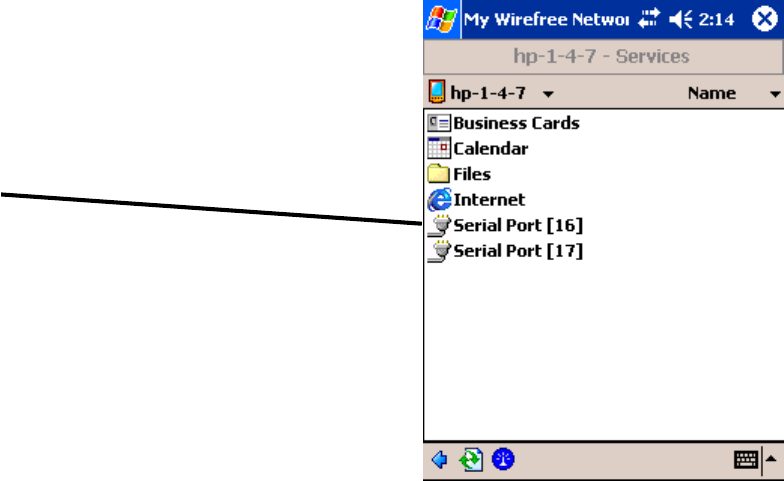
Page 51My Wirefree Network Copyright 2003 Rappore Consulting, Inc.
Serial Port (SPP) on Remote Device
The Serial Port service emulates an RS232 (or
similar) serial cable. The service name will usually
identify the serial port assigned by the remote
device.
Tap Serial Port.
A connection is established to the identified serial
port for application use.
Serial Ports
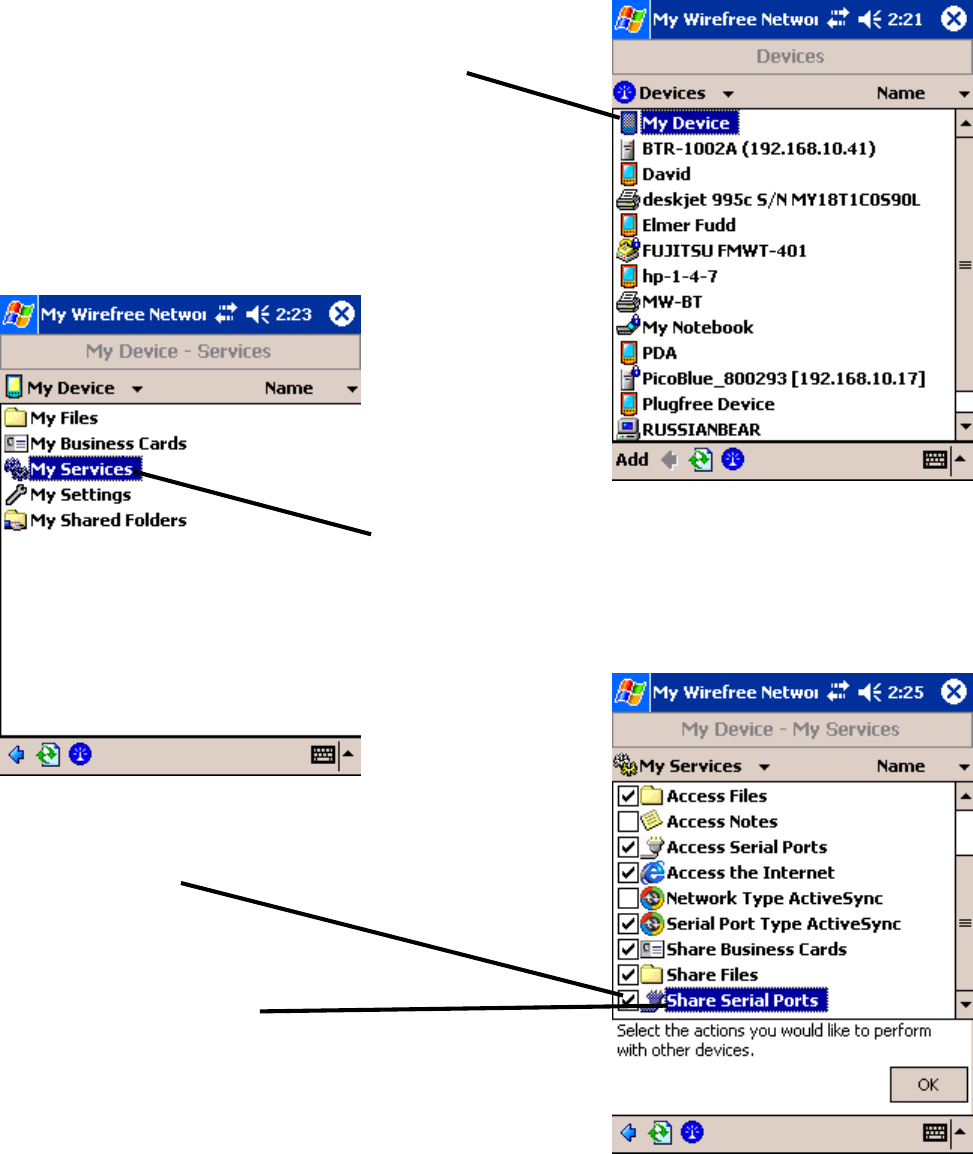
Page 52 My Wirefree NetworkCopyright 2003 Rappore Consulting, Inc.
Share Serial Ports
A shared serial port must be added before a Serial Port service can be displayed to
remote users. The Shared Serial Port list also displays those serial ports (SER# and
COM#) created by using remote serial device services.
Add a Serial Port
From the Devices screen, tap My Device.
Tap My Services.
If the checkbox in front of Share Serial Ports is not
checked, tap it to make a check appear.
Tap Share Serial Ports.
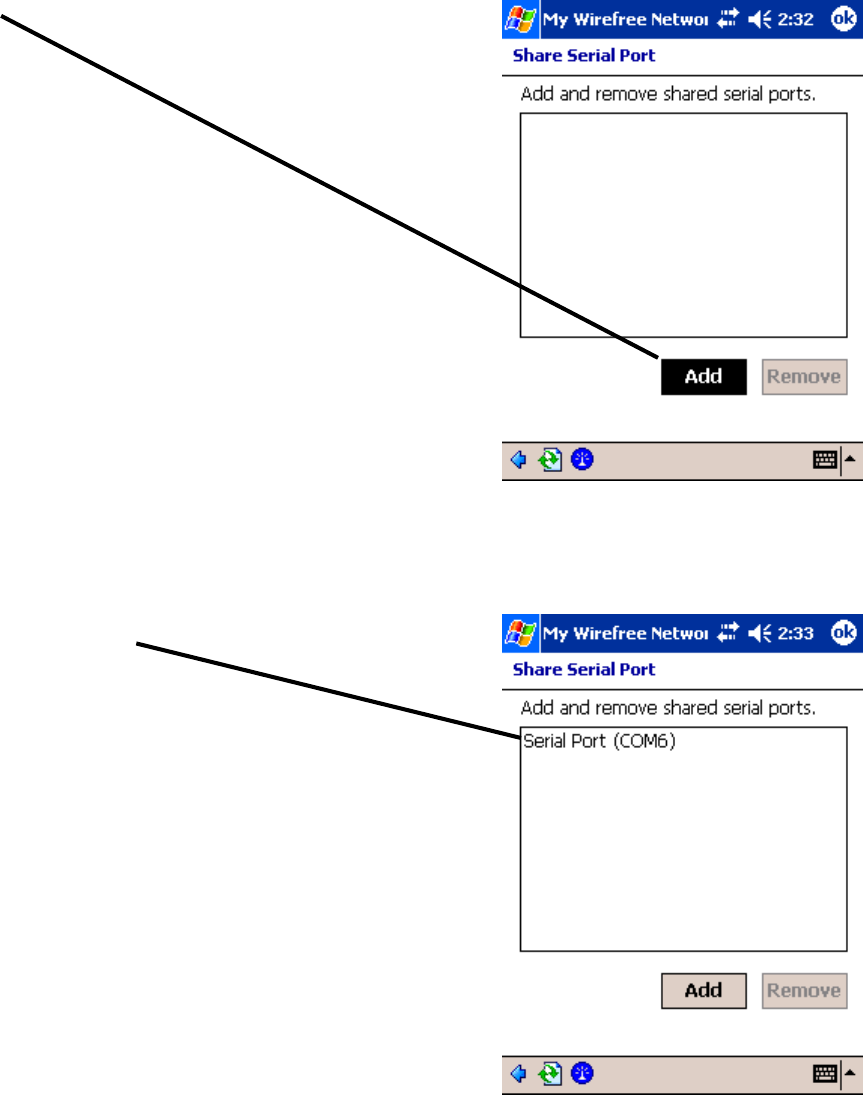
Page 53My Wirefree Network Copyright 2003 Rappore Consulting, Inc.
Tap Add.
A serial port is established.
Serial Port (COM#) is the name format used for the
list.
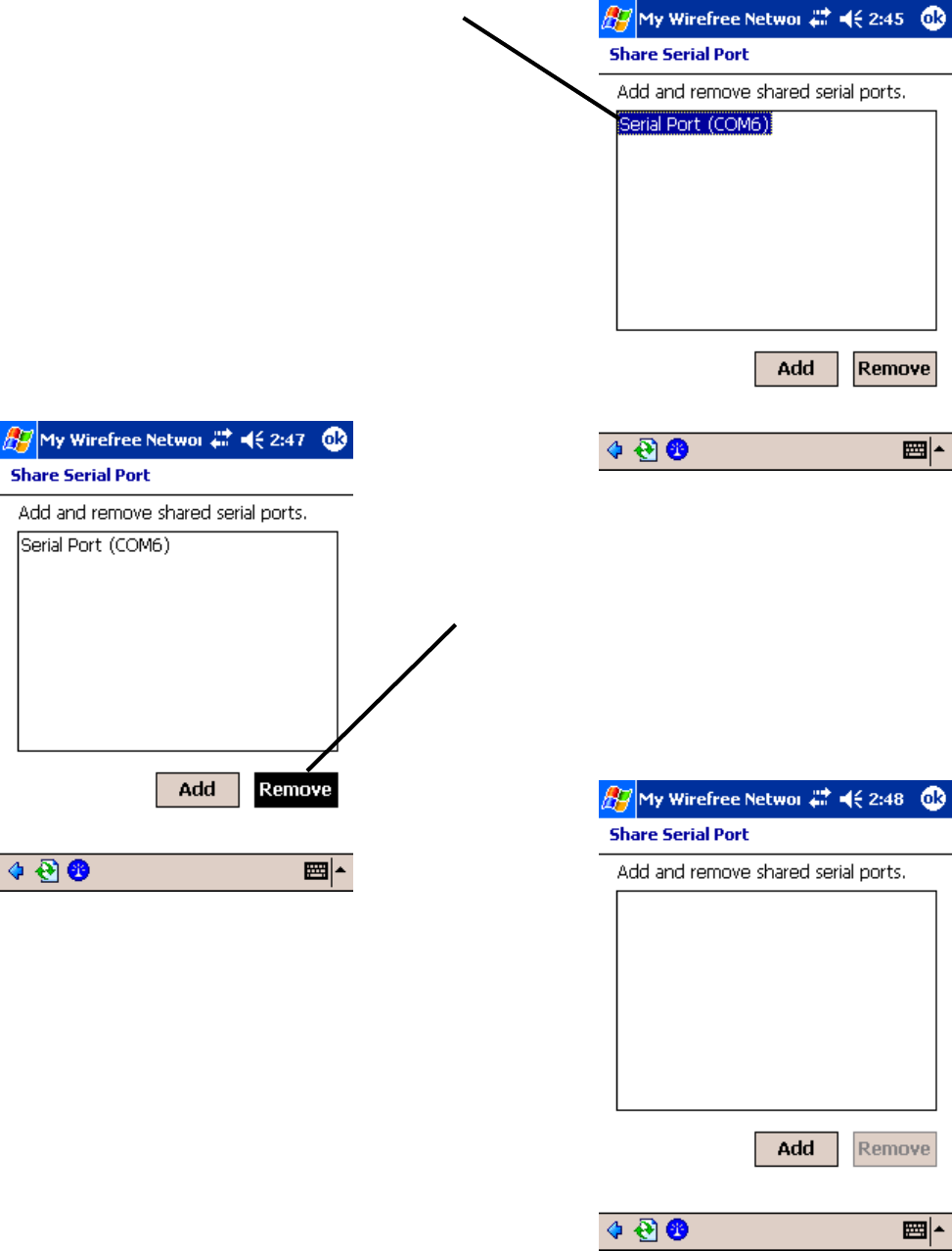
Page 54 My Wirefree NetworkCopyright 2003 Rappore Consulting, Inc.
Remove a Serial Port
The serial port is removed from the list.
Note: Depending on the PDA configuration,
typically only 4 COM ports are available for
application use.
Tap on the serial port you wish to remove.
Tap Remove.

Specifications
Transmission method
Wireless channels used
RF frequency band
FHSS system
Channels 1 to 79
2402-2480 MHz